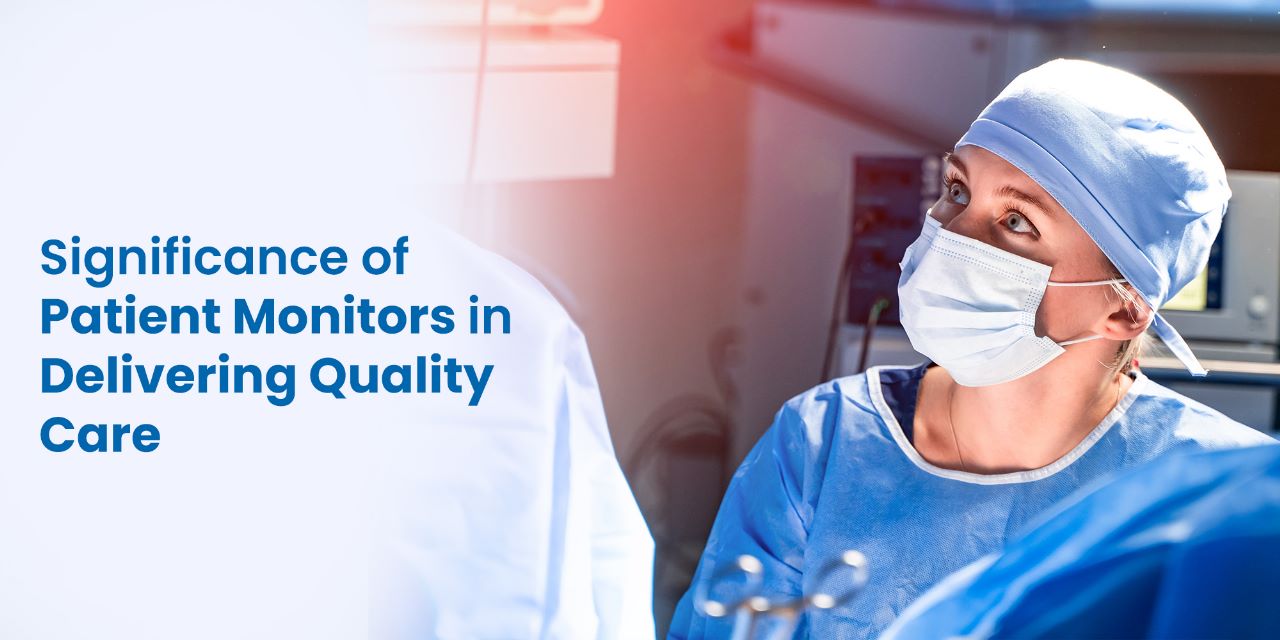In today’s healthcare landscape, patient monitoring has become an essential aspect of providing quality care. Patient monitors are sophisticated medical devices that enable healthcare professionals to monitor vital signs, track physiological parameters, and assess the overall well-being of patients. These monitors play a crucial role in various healthcare settings, including hospitals, clinics, ambulatory care centers, and home healthcare. This comprehensive guide explores the application of patient monitoring devices, their components, and the impact they have on delivering optimal patient care.
1. Understanding Patient Monitoring Devices:
Patient monitoring devices encompass a wide range of technological advancements designed to continuously collect, display, and analyze crucial patient data. These devices monitor vital signs such as heart rate, blood pressure, respiratory rate, oxygen saturation, and temperature. They also provide real-time information on electrocardiography (ECG), capnography, and invasive and non-invasive hemodynamic measurements. By offering comprehensive insights into a patient’s condition, these monitors aid healthcare professionals in making informed decisions and detecting any deviations from normal physiological parameters.
2. Components and Features of Patient Monitors:
Patient monitors consist of various components that work together to ensure accurate and reliable data collection. These include sensors, cables, display screens, data processors, alarms, and connectivity options. Modern patient monitors are equipped with advanced features such as touchscreen interfaces, wireless connectivity, trend analysis, and customizable alarm settings. The integration of these components and features allows healthcare providers to efficiently monitor multiple patients simultaneously and track their progress over time.
3. Applications of Patient Monitoring Devices:
a. Intensive Care Units (ICUs) and Other Critical Care Units (NICUs, CCUs, SICUs)
Patient monitors are extensively used in critical care settings to continuously monitor patients who require close observation. These monitors assist in detecting changes in vital signs, allowing healthcare professionals to promptly intervene in case of any deterioration. They aid in the management of critically ill patients, providing valuable insights into their cardiovascular status, respiratory function, and neurological stability. Moreover, patient monitors facilitate the monitoring of patients undergoing anesthesia during surgical procedures, ensuring their safety, and optimizing outcomes.
b. Emergency Departments and Operating Rooms
In emergency departments and operating rooms, patient monitors are vital in monitoring patients’ vital signs during various medical procedures. They provide real-time feedback on physiological parameters, allowing medical personnel to make immediate decisions and intervene as needed. Patient monitors equipped with invasive blood pressure monitoring capabilities are particularly crucial in surgical procedures, ensuring hemodynamic stability and guiding fluid management.
c. General Wards and Step-down Units
Patient monitors are extensively used in critical care settings to continuously monitor patients who require close observation. These monitors assist in detecting changes in vital signs, allowing healthcare professionals to promptly intervene in case of any deterioration. They aid in the management of critically ill patients, providing valuable insights into their cardiovascular status, respiratory function, and neurological stability. Moreover, patient monitors facilitate the monitoring of patients undergoing anesthesia during surgical procedures, ensuring their safety, and optimizing outcomes.
d. Home Healthcare
Patient monitors are also finding applications in home healthcare settings. These portable devices allow patients with chronic conditions or those recovering from surgery to be monitored in the comfort of their own homes. By collecting and transmitting vital data to healthcare providers, patient monitors enable remote monitoring and timely interventions, reducing the need for frequent hospital visits and improving overall patient experience.
4. Advantages of Patient Monitoring Systems:
a. Early Detection and Intervention
Patient monitors enable healthcare providers to identify subtle changes in vital signs and intervene promptly before a condition worsens. This early detection can significantly improve patient outcomes, reduce complications, and save lives.
b. Enhanced Patient Safety
Patient monitoring devices are equipped with customizable alarm systems that alert healthcare providers when vital signs deviate from preset parameters. These alarms help ensure patient safety by notifying caregivers of potential emergencies or abnormal readings.
c. Data-Driven Decision Making
Patient monitors provide comprehensive and real-time data, enabling healthcare professionals to make informed decisions.
Trivitron Healthcare offers an advanced patient monitoring system designed to provide accurate and real-time information about a patient’s vital signs in the ICU setting. With their state-of-the-art technology and user-friendly interface, the Monitor offers healthcare professionals a reliable tool to monitor patients’ conditions effectively. The monitor displays essential parameters such as heart rate, blood pressure, oxygen saturation, and respiratory rate, allowing medical staff to closely track the patient’s health status.
With its cutting-edge technology and comprehensive monitoring capabilities, the Trivitron Patient Monitors are a valuable tool in the ICU, empowering healthcare professionals to provide optimal care and improve patient outcomes.

